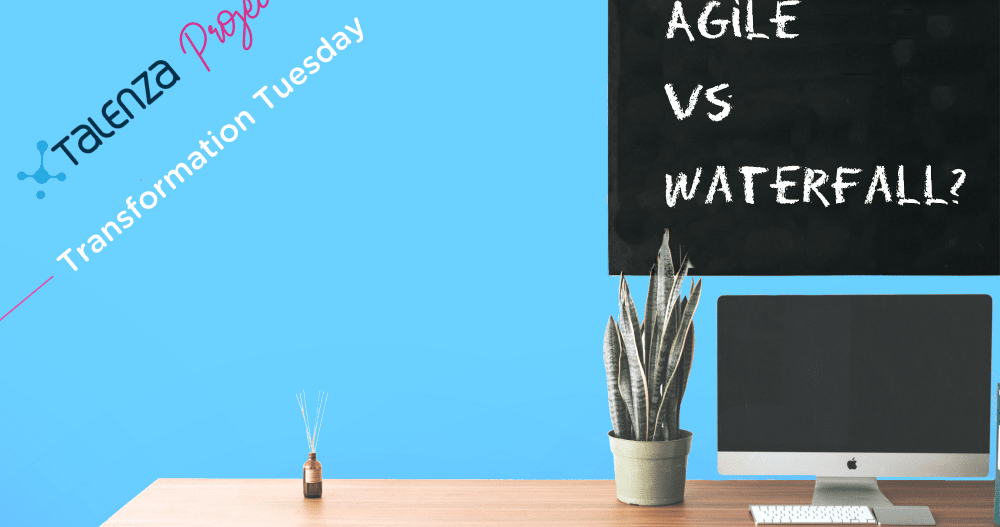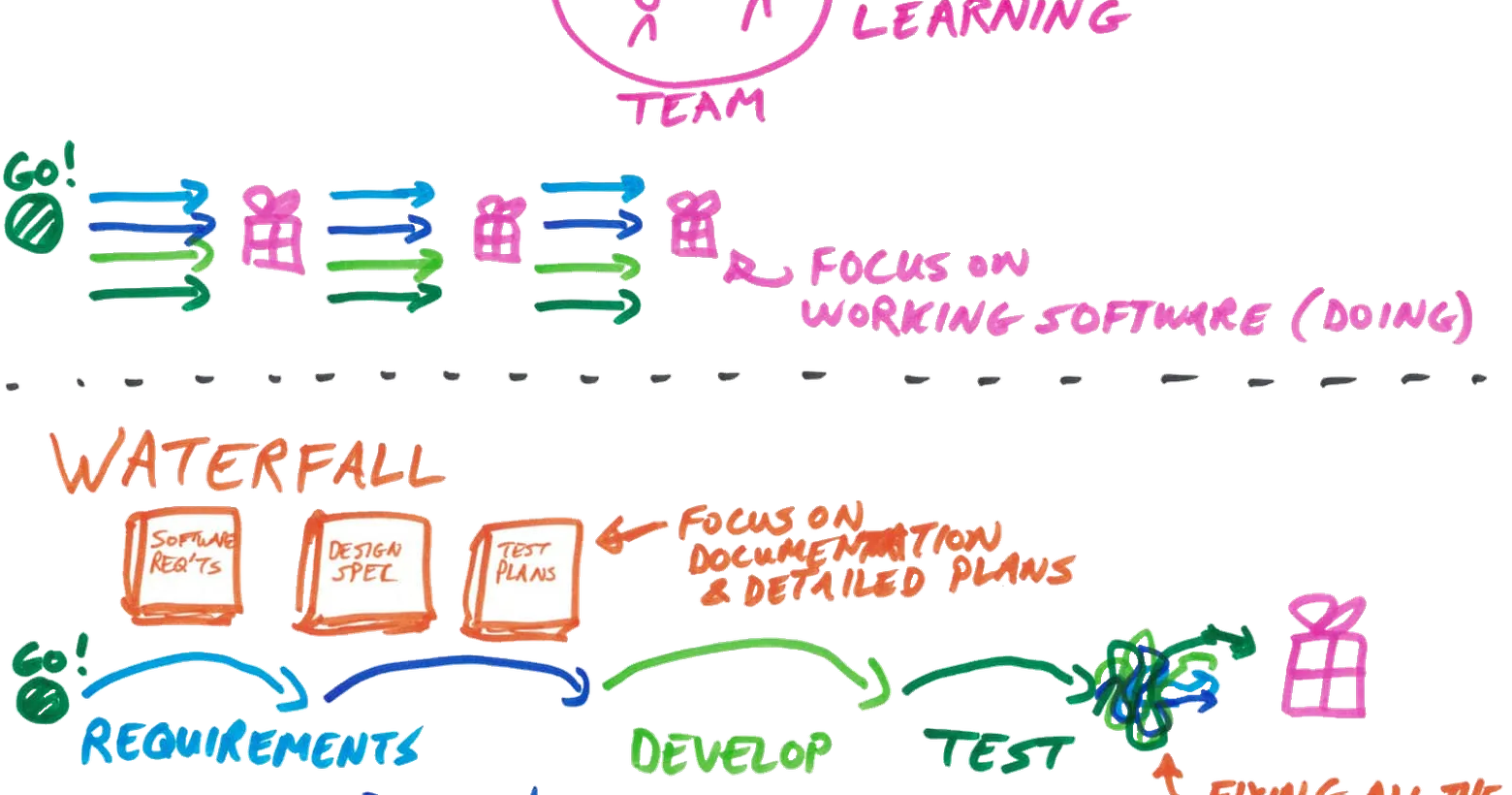Is There a Place for Waterfall Methodology in 2022?

For many years, Waterfall has been a widely used project management method with a linear approach...
In comparison, Agile is believed to be the “new” iterative approach to project management that helps teams deliver value to customers faster, and with ‘fewer headaches.’ We’ve all heard it, Agile is the way forward. So outdated Waterfall must not have a place – right?
As technology continues to improve, we are found to be moving into a more digital world. Therefore, businesses are adapting to new ways of working. Well, some businesses are, and some may not be. This leads me to my interest around the topic of “Agile VS Waterfall Methodology”.
There are many different opinions on this topic, with some companies still preferring a Waterfall-style approach, because “it’s structured and predictable” and other businesses preferring only Agile due to it’s collaborative effort and continuous improvement.
Agile is used most predominantly by our clients who have typically digital projects. While that may be the case, we’ve found that Agile doesn’t necessarily lend itself to all products or organisational environments. Sometimes it proves more costly, risky, or less efficient.
The approach that a project manager or organisation takes will depend on two things: what they are developing and the risk averse nature of the work.
Let's explore some scenario’s below to find out if there is truly a place for Waterfall methodology in 2022:
Use cases of Waterfall
Construction is underway on a new gas plant. Considering the potential risk involved, the company has meticulously planned and documented each stage of construction. As such, a Waterfall approach would be the best choice, since deployment no longer requires 'test and learn'. On the other hand, an Agile approach will be the most appropriate method when the plant is up and running.
Use Cases of Agile
A small retailer wants to increase sales by creating an online store. The business is embarking on an entirely new venture that may secure its future. They are keen to see if their business fits into an online sales model and have a modest budget. For this example, an ideal approach is an Agile approach. This would allow the retailer to test their digital presence and see whether customers are interested in using this as a purchasing channel.
A Hybrid Approach
One company is developing a medical tool used in heart surgery. As the minimum viable product must be a fully functioning tool, the risk appetite is extremely low. Despite the need to prototype and test a completely new product, a blended approach between Agile and Waterfall is most appropriate given the critical nature and function of the product.

What about the uses of Agile and Waterfall across different teams?
I spoke with Phuong Tran, Managing Director at Mantria Consulting (her client being in superannuation) about her experience working with different methodologies across organisations. Phuong has worked in businesses such as Lendlease & AMP in which the agile methodology was implemented.
“I’d like to start by pointing out that there are different types of transformations, business transformation, and
digital transformation. Many businesses are going through business transformation and assessing how they will shift the way they operate in a competitive manner into the future. This often means changes in mindset, core capabilities, processes, and technology. Digital transformation can be off the back of the broader business transformation.
Because of business transformation, many organisations are going through organisational change management specifically how IT projects are run. The challenge is you can't just say “we will just run Agile” as everyone has a different opinion on what this would entail.
There is Agile, Waterfall, and many other project governance methodologies in between, but as long as you know what the unknowns are, you can control the risk of the project”.
Agile is pushing people to learn something quickly, so we need to see if we can teach everyone fast enough. I say “this is Agile, and this is Waterfall but don’t hate either one”.
You may hear many professionals joke that their project methodology is ‘wagile’ which is the combination of Waterfall and Agile.
We sometimes have a phase of the project where it's more Waterfall-like, and another phase on the same project that is more Agile and it still finds its way across the finish line. So yes, sometimes we do both!
As the project team, we should agree upfront what the project deliverables and governance are. We negotiate how "Agile" we will practice the project and negotiate everything (ceremonies, stand-ups etc.). This way we'll all know how much ‘Wagile’ is in the project and everyone's expectations are maintained.
The main challenge is understanding what kind of project is it, what other business operational factors will be influencing the project, and the willingness of the other people on the project team (both technical and business side), only then we can determine how much we need to push the Agile agenda.
Could ‘Wagile’ be this year's addition to the Merriam-webster dictionary? 😅
For news, insights, or a new job in Project Services, reach out to us.